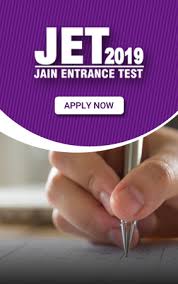Subject | Syllabus |
English | - Reading comprehension, Vocabulary, Grammar, Sentence Completion, Sentence Formation, Common Errors, Cognitive Skills, Analogies, Idioms, One-word substitution.
|
Mathematics | - Sets, Relations and Functions Sets and their representations, union, intersection, and complements of sets and their algebraic properties
- Complex numbers in the form a+ib and their representation in a plane. Argand diagram. Algebra of complex numbers, modulus.
- Determinants and matrices of order two and three, properties of determinants.
- Quadratic equations in real and complex number system and their solutions. The Relation between roots and coefficients, nature of roots.
- A fundamental principle of counting: permutation as an arrangement and combination as selection, the meaning of P(n,r) and C(n,r).
- Binomial theorem and its Applications Binomial theorem for a positive integral index; general term and middle term.
- Arithmetic, geometric and harmonic progressions. Insertion of arithmetic, geometric and harmonic means between two given numbers.
- Differential Calculus Polynomials, rational, trigonometric, logarithmic and exponential functions. Inverse functions. Graphs of simple functions. Limits, continuity, differentiation of the sum, difference, product and quotient of two functions.
- Integral as an anti-derivative. Fundamental integrals involving algebraic, trigonometric, exponential and logarithmic functions. Integration by substitution, by parts, and by partial fractions. Integration using trigonometric identities. Integral as limit of a sum.
- Vectors and scalars, the addition of vectors, components of a vector in two dimensions and three-dimensional space, scalar and vector products, scalar and vector triple product. Application of vectors to plane geometry.
- The Probability of an event, addition and multiplication theorems of probability and their applications; Conditional probability.
|
Physics |
- Units for measurement, the system of units - S.I.
- Motion in one dimension and accelerated motion-scalar and vector quantities-Newton’s laws of motion - force and projectile motion-uniform circular motion friction-laws of friction.
- Gravitation, Mechanics of Solids and Fluids The universal law of gravitation, acceleration due to gravity-variation of ‘g’ with altitude, latitude, and depth-gravitation potential-escape velocity and orbital velocity.
- Simple harmonic motion - equations of motion oscillations of spring-simple pendulum-free, forced and damped oscillations resonance.
- Kinetic theory of gases-postulates-pressure of a gas specific heat capacity - relation between Cp and Cv - first law of thermodynamics.
- Ray and Wave Optics and Magnetism.
- Coulomb’s inverse square law-dielectric constant-electric field-electric lines of force-electric dipole-electric potential-potential difference-electric flux-Gauss theorem-
- Capacitor capacitors in parallel.
- Atomic Physics and Relativity Atomic structure-properties of cathode rays and positive rays-specific charge of an electron-atom model - Thomson atom model-Rutherford atom model-Bohr atom model - merits.
- Dual Nature of Matter and Nuclear Physics Matter waves-wave nature of particles De Broglie wavelength-electron microscope. Nuclear properties; radius, mass, binding energy, density, isotopes.
- Semiconductors-doping-types-PN junction diode - biasing-diode as a Rectifier - transistors - transistor characteristics-amplifier-gain feedback in amplifiers - logic gates- basic logic gates - NOT, OR, AND, NOR.
|
Chemistry |
- Matter and its nature, Dalton’s atomic theory; The concept of the atom, molecule, element, and compound; physical quantities and their measurements in chemistry, precision.
- Classification of matter into solid, liquid and gaseous states. Solid State: Classification of solids: molecular, ionic, covalent and metallic solids, amorphous and crystalline solids (elementary idea).
- Periodic Properties Modern periodic law and present form of the periodic table, s & p block elements, periodic trends in properties of elements, atomic and ionic radii, ionization enthalpy.
- Atomic Structure Discovery of sub-atomic particles (electron, proton, and neutron); Thomson and Rutherford atomic models and their limitations; nature of electromagnetic radiation, the photoelectric effect.
- Chemical Bonding and Molecular Structure Covalent Bonding: Concept of electronegativity, Fagan's rule, dipole moment; Valence Shell Electron Pair Repulsion (VSEPR) theory and shapes of simple molecules. Quantum mechanical approach to covalent bonding: Valence bond theory–Its important features.
- Chemical Energetics First law of thermodynamics, Energy changes during a chemical reaction, Internal energy and Enthalpy.
- Solutions Different methods for expressing the concentration of solution-Molality, molarity, mole fraction, percentage (by volume and mass both), the vapour pressure of solutions and Raoult’s law-ideal and non - ideal solutions, vapour pressure-composition plots for an ideal.
- Meaning of equilibrium, the concept of dynamic equilibrium. Equilibria involving physical processes: Solid-liquid, liquid-gas, and solid-gas equilibria, Henry’s law.
- Hydrocarbons Classification, isomerism, IUPAC nomenclature, general methods of preparation, properties, and reactions.
- Biomolecules Carbohydrates–Classification: aldoses and ketoses; monosaccharides (glucose and fructose), constituent monosaccharides of oligosaccharides (sucrose, lactose, maltose) and polysaccharides (starch, cellulose, glycogen).
|


Comments